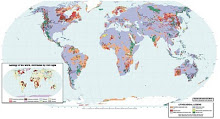Toxicol Sci. 2011 Jan;119(1):73-83. Epub 2010 Oct 11.
Tokar EJ, Diwan BA, Ward JM, Delker DA, Waalkes MP.
Laboratory of Comparative Carcinogenesis, National Cancer Institute, National Institute of Environmental Health Sciences, The National Institute of Environmental Health Sciences, Research Triangle Park, Raleigh, North Carolina 27709, USA.
Abstract
In a previously developed mouse model, arsenic exposure in utero induces tumors at multiple sites in the offspring as adults, often duplicating human targets. However, human environmental inorganic arsenic exposure occurs during the entire life span, not just part of gestation. Thus, "whole-life" inorganic arsenic carcinogenesis in mice was studied. CD1 mice were exposed to 0, 6, 12, or 24 ppm arsenic in the drinking water 2 weeks prior to breeding, during pregnancy, lactation, and after weaning through adulthood. Tumors were assessed in offspring until 2 years of age. Arsenic induced dose-related increases in lung adenocarcinoma (both sexes), hepatocellular carcinoma (both sexes), gallbladder tumors (males), and uterine carcinomas. Arsenic induced dose-related increases in ovarian tumors (including carcinomas) starting with the lowest dose. Adrenal tumors increased at all doses (both sexes). Arsenic-induced lung and liver cancers were highly enriched for cancer stem cells, consistent with prior work with skin cancers stimulated by prenatal arsenic. Reproductive tract tumors overexpressed cyclooxygenase-2 and estrogen receptor-α. Arsenic target sites were remarkably similar to prior transplacental studies, although tumors from whole-life exposure were generally more aggressive and frequent. This may indicate that arsenic-induced events in utero dictate target site in some tissues, whereas other exposure periods of arsenic enhance incidence or progression, though other factors could be at play, like cumulative dose. Whole-life arsenic exposure induced tumors at dramatically lower external doses than in utero arsenic only while more realistically duplicating human exposure.
Thursday, February 17, 2011
Subscribe to:
Post Comments (Atom)




No comments:
Post a Comment